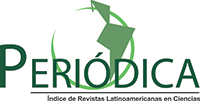Caracterização de pacientes atendidos em um serviço de queimados e atitudes no momento do acidente
DOI:
https://doi.org/10.5216/ree.v14i4.15186Palavras-chave:
Queimaduras, Atitude, Primeiros Socorros, Enfermagem.Resumo
Este estudo objetivou caracterizar o perfil de pacientes atendidos em uma Unidade de Queimados e suas atitudes tomadas no momento da queimadura. Dados sociodemográficos e sobre o acidente foram coletados das fichas de atendimento da Seção de Reabilitação, no período de maio 2007 a maio 2008, e analisados no SPSS 18.0, obtendo-se medidas de frequência e de tendência central. Dos 211 pacientes, 62,2% eram homens com 16,5% de área corporal atingida. Álcool e líquidos superaquecidos foram os agentes mais comuns, e o acidente domiciliar, o mais frequente. Apenas 39% dos pacientes tiveram mais de uma atitude após a queimadura; 29,3% não tiveram qualquer atitude e 22,2% referiram ter conhecimento prévio sobre primeiros socorros. Predominaram homens em idade produtiva que agiram com condutas instintivas e imediatas à queimadura, demonstrando desconhecimento sobre atitudes adequadas. O estudo sinaliza a necessidade de ações direcionadas à prevenção e orientação.
Descritores: Queimaduras; Atitude; Primeiros Socorros; Enfermagem.














